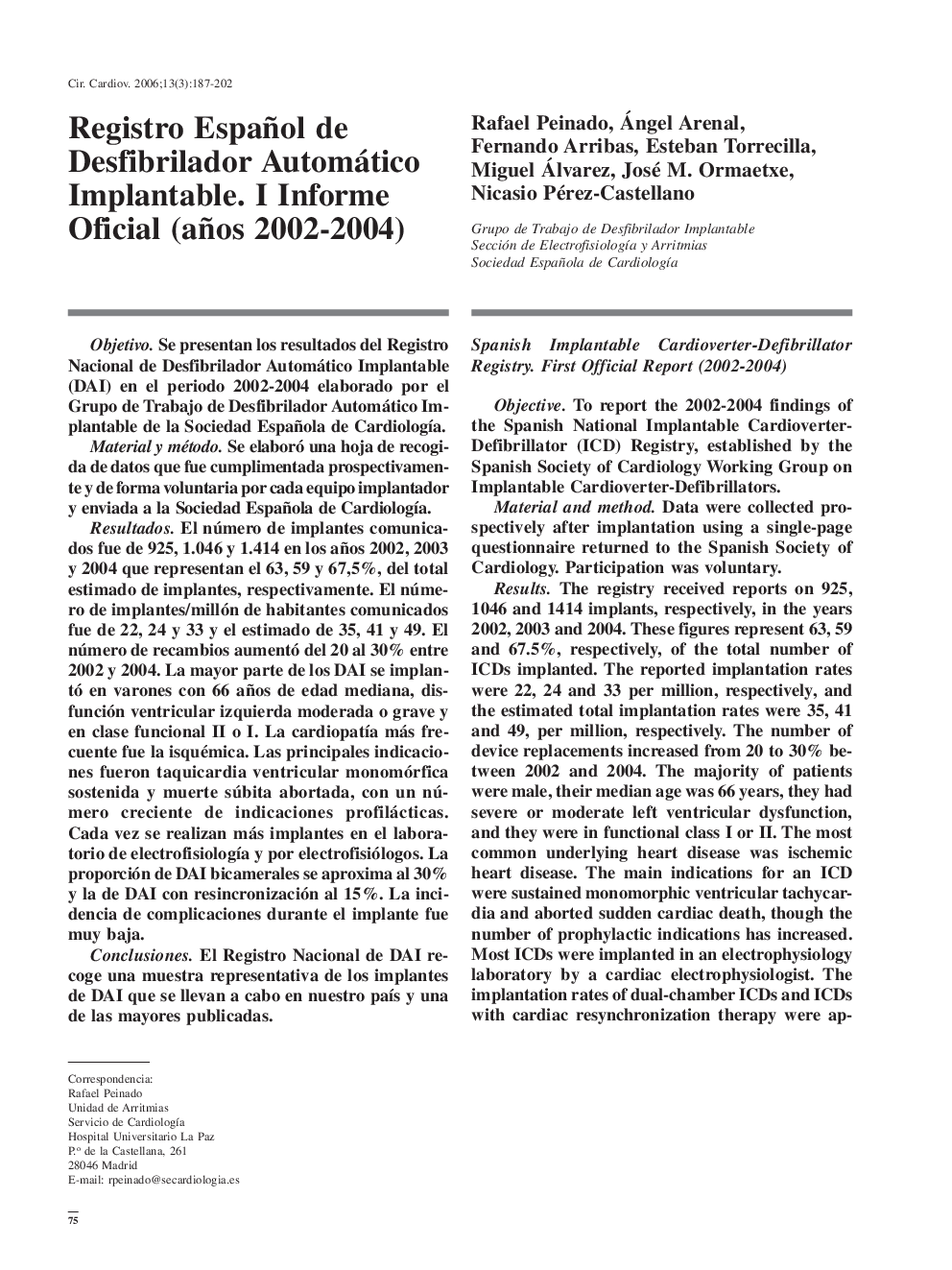| Article ID | Journal | Published Year | Pages | File Type |
|---|---|---|---|---|
| 2908212 | Cirugía Cardiovascular | 2006 | 15 Pages |
ObjetivoSe presentan los resultados del Registro Nacional de Desfibrilador Automático Implantable (DAI) en el periodo 2002-2004 elaborado por el Grupo de Trabajo de Desfibrilador Automático Implantable de la Sociedad Española de Cardiología.Material y métodoSe elaboró una hoja de recogida de datos que fue cumplimentada prospectivamente y de forma voluntaria por cada equipo implantador y enviada a la Sociedad Española de Cardiología.ResultadosEl número de implantes comunicados fue de 925, 1.046 y 1.414 en los años 2002, 2003 y 2004 que representan el 63, 59 y 67,5%, del total estimado de implantes, respectivamente. El número de implantes/millón de habitantes comunicados fue de 22, 24 y 33 y el estimado de 35, 41 y 49. El número de recambios aumentó del 20 al 30% entre 2002 y 2004. La mayor parte de los DAI se implantó en varones con 66 años de edad mediana, disfunción ventricular izquierda moderada o grave y en clase funcional II o I. La cardiopatía más frecuente fue la isquémica. Las principales indicaciones fueron taquicardia ventricular monomórfica sostenida y muerte súbita abortada, con un número creciente de indicaciones profilácticas. Cada vez se realizan más implantes en el laboratorio de electrofisiología y por electrofisiólogos. La proporción de DAI bicamerales se aproxima al 30% y la de DAI con resincronización al 15%. La incidencia de complicaciones durante el implante fue muy baja.ConclusionesEl Registro Nacional de DAI recoge una muestra representativa de los implantes de DAI que se llevan a cabo en nuestro país y una de las mayores publicadas.
ObjectiveTo report the 2002-2004 findings of the Spanish National Implantable Cardioverter- Defibrillator (ICD) Registry, established by the Spanish Society of Cardiology Working Group on Implantable Cardioverter-Defibrillators.Material and methodData were collected prospectively after implantation using a single-page questionnaire returned to the Spanish Society of Cardiology. Participation was voluntary.ResultsThe registry received reports on 925, 1046 and 1414 implants, respectively, in the years 2002, 2003 and 2004. These figures represent 63, 59 and 67.5%, respectively, of the total number of ICDs implanted. The reported implantation rates were 22, 24 and 33 per million, respectively, and the estimated total implantation rates were 35, 41 and 49, per million, respectively. The number of device replacements increased from 20 to 30% between 2002 and 2004. The majority of patients were male, their median age was 66 years, they had severe or moderate left ventricular dysfunction, and they were in functional class I or II. The most common underlying heart disease was ischemic heart disease. The main indications for an ICD were sustained monomorphic ventricular tachycardia and aborted sudden cardiac death, though the number of prophylactic indications has increased. Most ICDs were implanted in an electrophysiology laboratory by a cardiac electrophysiologist. The implantation rates of dual-chamber ICDs and ICDs with cardiac resynchronization therapy were approximately 30 and 15%, respectively. Very few complications occurred during implantation.ConclusionsThe Spanish National ICD Registry contains a representative sample of ICD implantations performed in the country. The registry is one of the largest reported.
